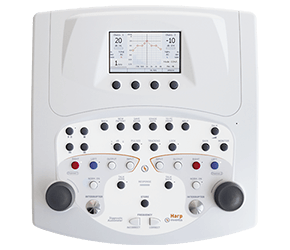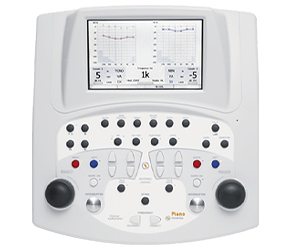The detection of dead cochlear regions: TEN test
The TEN test is used as a practical investigation tool for the detection of dead cochlear regions. It is based on the use of a background noise from which it takes its name, the Threshold-Equalizing Noise (TEN), in the presence of which the patient’s auditory threshold is measured.
It was developed and validated by the research group of professor Brian C.J. Moore of the University of Cambridge and nowadays it is considered one of the most reliable and easy-to-perform test in daily clinical practice for the search for cochlear disorders.
The diagnosis of dead cochlear regions is particularly useful if a clinician is considering the possibility of prescribing a hearing aid to a patient: at the frequencies associated with dead regions, in fact, the device may not guarantee the patient the expected amplification.
The outcome of the TEN test represents in these cases a valid diagnostic support and counseling tool, useful for deciding with the patient if the reachable amplification can satisfy his\her needs. Alternatively, the TEN test is a valid tool for deciding whether the patient is a good candidate for a cochlear implant.




 Go to the top
Go to the top

 International - English
International - English Italia - Italiano
Italia - Italiano France - Français
France - Français USA - English
USA - English